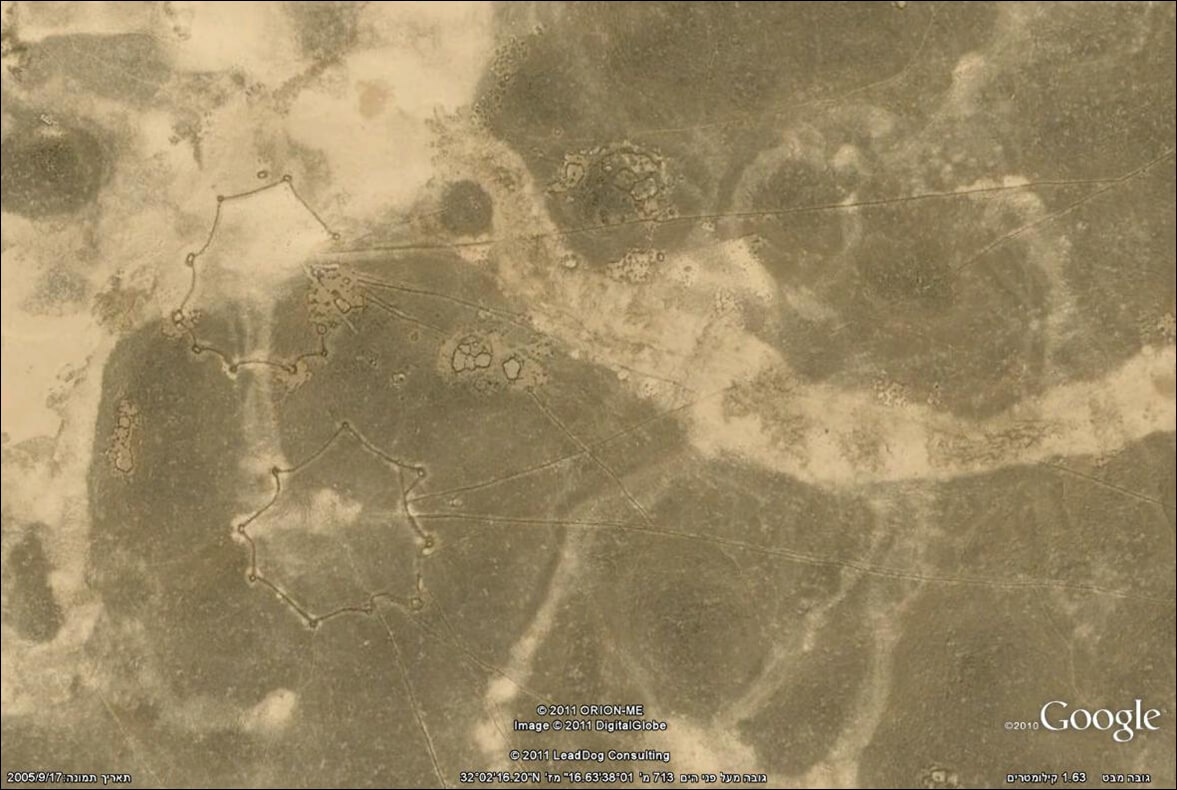"The use of firearms in modern times marks the last stage in the extinction of the wild animals of the Middle East, but to a large extent a mass hunter using 'desert kites' 5000 years earlier marks the beginning of the process," noted Prof. Guy Bar-Oz from the University of Haifa who led the research

The extinction of the Persian Gazelles from most of the landscapes of the Middle East began already 5000 years ago, in the protohistoric period following the transition to mass hunting methods, according to a new study by an Israeli-American research team led by Prof. Guy Bar-Oz from the Zinman Institute of Archeology at the University of Haifa. The results of the study were published last week in the prestigious journal Proceedings of the National Academy of Sciences (PNAS).
"The seasonal migration of the Persian and wild Syrian gazelle during these periods was without a doubt a spectacular event comparable in strength and scope to the migration patterns of the Thompson's Gazelle , the wildebeest and the zebra in the Serengeti steppe in East Africa. The uncontrolled hunting that developed among the ancient agricultural societies led to the slaughter of entire herds, a fact that also made it difficult for them to recover, and ultimately also led to their disappearance from the landscapes of the ancient Levant", noted Prof. Bar-Oz.
Populations of three species of deer existed thousands of years ago throughout the Levant, but today both the Haaretz-Israeli deer, both the Persian deer and the desert deer are on the list of species in danger of extinction. Initially, it was assumed that deer hunting by modern means of the late 19th and early 20th centuries was the main reason for the danger of extinction, but the results of the new study reveal that the beginning of the process - and apparently also the main part - began already 5000 years ago and with much less sophisticated means.
The beginning of the research was in the 80s when Prof. Frank Hall from Yale University excavated a complex of bones of Persian deer that was discovered in Tel Horan, in the area of the Hebur River valley in Syria, from where they were transferred to the Smithsonian's National Museum of Nature in Washington. A renewed collaboration of Prof. Hall together with Prof. Melinda Zeder from the Smithsonian and with Prof. Bar-Oz led to a new examination and a renewed archaeo-zoological analysis of the findings.
The remains of at least 93 Persian deer were found in the assemblage of bones and the distribution of ages and sexes was similar to that of an entire herd of deer with a high proportion of young and a similar proportion of males and females. According to the researchers, other features found on the bones, such as their density and distribution, the abundance of meat-poor leg parts, cut marks that indicate that the deer were stripped of their skin, meat-poor skeleton parts that were thrown aside, and more indicate that the bones were accumulated within a very short period of time, perhaps even following A single hunter event during which an entire herd of about 100 individuals was caught and killed.
Prof. Bar-Oz pointed out that the assemblage of bones in Tel-Horan was found near about 50 "desert kites" - low walls that stretch across the desert for hundreds of meters, and sometimes several kilometers, and at the end of which is a circular trench built, with the prevailing hypothesis being that this is an ancient facility for trapping animals. According to him, the current discovery is the first time animal bones have been found so close to the "kites" and, in fact, this is the first proof that the "kites" were used for mass hunting. Similar "kites" were also discovered in the Negev region of Israel and were recently excavated by a team of researchers from the University of Haifa led by Dr. Danny Nadel, landscape ecologist Dr. Dan Melkinson and Prof. Bar-Oz.
Prof. Bar-Oz added that this type of mass and uncontrolled hunting - throughout the desert there are thousands of "kites" of various sizes - caused far-reaching ecological effects and culminated in the extinction of species. "In ancient times among populations of hunter-gatherers who subsisted on wild animals as the only animal food, the hunter was focused and balanced. The transition to an agricultural society resulted in the slaughter of entire herds, a fact that also made it difficult for them to recover. The use of firearms in modern times marks the last stage in the extinction of these animals from the Levant landscape, but to a large extent the hunter using the thousands of 'kites' found in the desert 5000 years earlier marks the beginning of the process", he concluded.

3 תגובות
From my gopher father, I learned that the fallows have almost eliminated everything that moves around them and one of the results is smaller deer due to hunter pressure
Betya, you are smarter than everyone, that's clear
More than once it seems that the scientists want to find what they are looking for by force. The problem of living in the desert is water, and naturally the structure of the "kites" is also designed to "collect" water, and transport it to one place. The animals of the desert are always attracted to the bodies of water, and hence the humans hunted them in places where there is water. Life has a cause and spin, and you can't examine items just for themselves.